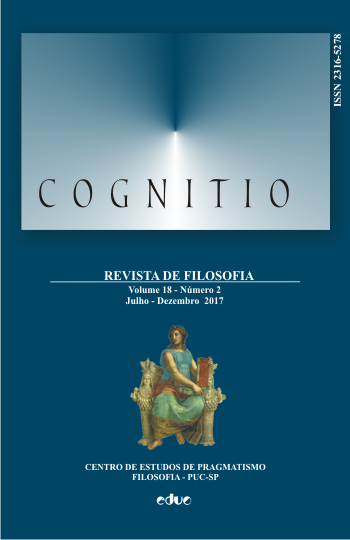Peirce’s esthetics as a science of ideal ends
DOI:
https://doi.org/10.23925/2316-5278.2017v18i2p205-229Keywords:
Peirce, Esthetics, Ideals, Normative scienceAbstract
It is argued here that the best interpretation of Peirce’s esthetics is as a normative science of ideal ends. Peirce’s influences in this regard include Plato’s notion of kalos, Friedrich Schiller’s The Aesthetic Education of Man, and Kant’s notion of architectonic. Based primarily on drafts of the Minute Logic in 1902 and the Harvard Lectures of 1903, the essential features of a normative science are discussed and the relation of esthetics to the other two normative sciences of logic and ethics is analyzed. Peirce’s concept of esthetic goodness is explicated, and the criteria for what he counts as a summum bonum is examined. Peirce’s own formulations of the summum bonum are analyzed, including his notion of concrete reasonableness, but also an interesting account of ultimate ideals, found in a manuscript fragment in 1903. The paper ends with a discussion between what is called Peirce’s positive and negative esthetics, understood as two different approaches to the formulation of ideal ends.Metrics
Metrics Loading ...
Downloads
Published
2018-02-03
How to Cite
Liszka, J. J. (2018). Peirce’s esthetics as a science of ideal ends. Cognitio: Revista De Filosofia, 18(2), 205–229. https://doi.org/10.23925/2316-5278.2017v18i2p205-229
Issue
Section
Papers on Pragmatism















